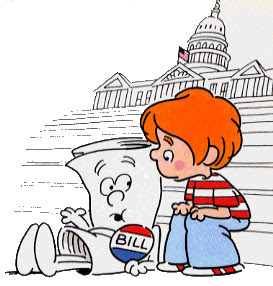
The purpose of this guide is to help you perform legislative history research. The home page provides an explanation of the legislative process, and describes documents associated with or produced during the legislative process. The remaining pages will discuss tools for searching for legislative history documents and guidance on locating compiled legislative histories.
This guide will be useful to both law students and non-law students. Please note, some of the resources discussed in this guide are publicly available government resources, while others require campus log-on. Lexis and Westlaw resources are only available to law students.
Legislative history is a term that refers to the documents that are produced by Congress as a bill is introduced, studied, and debated. These legislative documents are often used by attorneys and courts in an attempt to determine Congressional intent or to clarify vague or ambiguous statutory language.
Legislative documents are persuasive legal authority, meaning they do not have the force of law. Looking at the related comments and testimony, reports produced by House and Senate committees, and textual changes to various versions of a bill as it moved throughout the legislative process, however, may help in determining the intended meaning of the law.
Knowing when and how to use legislative documents is not always easy. While this guide provides some basic guidance, you may wish to seek out more information from other sources on legislative history, legislative process, and legislative research.We have provided links to some of these resources in the "More Resources" box on the bottom left of this page.
Watch Schoolhouse Rock explain the legislative process with song!

Below is a collection of links to more resources on legislative history, legislative process, and legislative research.





In addition to the more commonly known textual cannons. Several cannons of construction used by the courts address the application of extrinsic legislative materials. This interpretive guidance can be useful, but remember, it is just guidance. Below is a list of the extrinsic legislative cannons recognized by the Rehnquist Court, along with citations to cases which discussed/ utilized the cannon.


Tells you which years are associated with a particular Congress.